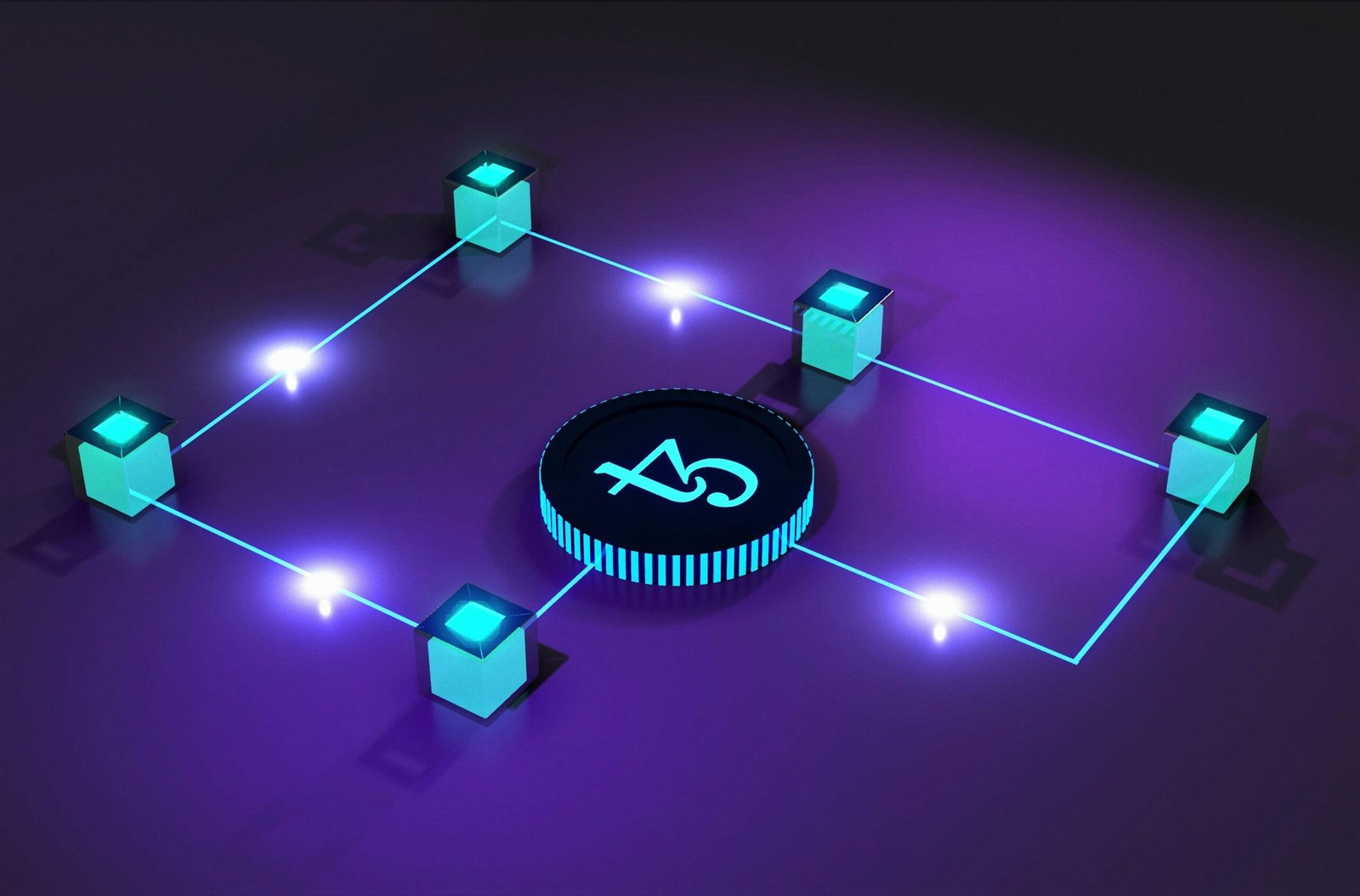Easy Steps to Build a Homemade Blockchain Node
Introduction to Blockchain Nodes
Blockchain technology has revolutionized the way we think about digital transactions and data security. At its core, a blockchain is a distributed ledger that records transactions across multiple computers, ensuring that the data is immutable and transparent. This decentralized nature is one of the key features that lends blockchain its robustness and trustworthiness.
Nodes are fundamental components of a blockchain network. Each node is essentially a participant in the network that holds a copy of the entire blockchain ledger. Nodes play a crucial role in maintaining the integrity and security of the blockchain. They validate and relay transactions, contribute to consensus mechanisms, and store a complete record of all transactions ever made on the network.
The decentralization of nodes ensures that no single entity has control over the entire blockchain. Instead, power is evenly distributed among all participants, which significantly enhances the network’s security and resilience. This distribution of power makes it exceptionally difficult for malicious actors to alter or falsify transaction data, as they would need to compromise a majority of the nodes simultaneously—a feat that is practically impossible in a well-distributed network.
Running a blockchain node not only contributes to the security and resilience of the network but also promotes transparency. By operating a node, individuals can independently verify transactions and participate in the consensus process, fostering a more open and participatory blockchain ecosystem. This active participation is essential for maintaining the democratic and decentralized nature of blockchain technology.
In conclusion, understanding the role and importance of nodes is crucial for anyone interested in blockchain technology. Nodes are the backbone of the network, ensuring its decentralization, security, and transparency. By running a node, you not only support the blockchain ecosystem but also gain a deeper understanding of how this transformative technology works.
Choosing the Right Blockchain Network
When embarking on the journey to build a homemade blockchain node, selecting the appropriate blockchain network is a crucial first step. The right network will align with your goals, technical capabilities, and the specific use case of your node. Among the most popular blockchain networks, Bitcoin and Ethereum stand out due to their widespread adoption and robust ecosystems.
Bitcoin, the pioneering cryptocurrency, offers unparalleled security and simplicity. It is primarily used for financial transactions and as a store of value. Setting up a Bitcoin node can be relatively straightforward, especially given the extensive documentation and large community support. However, Bitcoin’s network is limited in terms of smart contract functionality and other advanced features.
Ethereum, on the other hand, is renowned for its versatility. It supports smart contracts, decentralized applications (dApps), and a wide range of tokens. If your intention is to experiment with complex applications or engage in decentralized finance (DeFi), Ethereum might be the better choice. Nevertheless, Ethereum nodes can be more resource-intensive due to the network’s complexity and higher transaction volume.
Other notable networks include Binance Smart Chain, known for its high throughput and low transaction fees, and Polkadot, which emphasizes interoperability between different blockchains. These networks also offer vibrant communities and ample resources for node operators.
When choosing a blockchain network, consider the following factors:
Purpose of the Node: Determine whether you need a node for transaction validation, development, or participating in DeFi activities.
Technical Requirements: Assess the hardware and software prerequisites. Bitcoin nodes can run on modest hardware, whereas Ethereum and other sophisticated networks may require more robust systems.
Community Support: A strong and active community can be invaluable. Networks like Bitcoin and Ethereum have extensive support forums, developer resources, and regular updates.
By thoroughly evaluating these aspects, you can make an informed decision on the most suitable blockchain network for your homemade node, ensuring a rewarding and educational experience.
Hardware Requirements
Running a blockchain node requires careful consideration of hardware specifications to ensure optimal performance and reliability. The essential components that need to be evaluated include the CPU, RAM, storage, and internet connection. These elements will significantly influence the effectiveness and efficiency of your blockchain node.
Firstly, the CPU, or Central Processing Unit, is crucial as it handles the processing of transactions and maintaining the blockchain. For minimal setups, a dual-core processor is generally sufficient for less demanding blockchain networks. However, for optimal performance, especially on larger networks like Ethereum, a quad-core processor or higher is recommended.
Next, the memory or RAM is another critical component. A minimal setup may function on 4GB of RAM, but this could lead to slower performance and reduced efficiency. For more demanding blockchain networks and to ensure smooth operation, 8GB of RAM or higher is advisable. This allows the node to handle more transactions and data processing without lag.
Storage is also a significant consideration. Blockchain nodes store a copy of the entire blockchain, which can be quite large. A minimal setup might work with a 256GB SSD, but this will likely fill up quickly, necessitating frequent upgrades. For a more future-proof setup, a 1TB SSD is recommended. SSDs are preferred over HDDs due to their faster read and write speeds, which enhances the node’s performance.
Finally, a stable and fast internet connection is essential. Running a blockchain node involves constant synchronization with the network, requiring substantial bandwidth. A minimum of 10 Mbps internet speed is recommended, but for optimal performance, especially for high-traffic blockchain networks, a 100 Mbps connection or higher is preferable.
Balancing cost and performance, a mid-range setup with a quad-core processor, 8GB of RAM, a 1TB SSD, and a 100 Mbps internet connection offers a robust foundation for most blockchain networks. This configuration ensures reliability and efficiency without excessively high costs, making it an ideal choice for both beginners and experienced users aiming to run a blockchain node.
Setting Up the Operating System
When building a homemade blockchain node, selecting and installing an appropriate operating system is a crucial step. Linux distributions, such as Ubuntu or Debian, are highly recommended due to their stability, security, and extensive community support. These distributions offer robust environments that are ideal for running blockchain nodes efficiently.
To begin, download the latest version of your chosen Linux distribution from the official website. For Ubuntu, visit Ubuntu’s download page, and for Debian, go to Debian’s distribution page. Once downloaded, create a bootable USB drive using tools like Rufus for Windows or Etcher for macOS and Linux.
Insert the bootable USB drive into your computer and restart it. Access the BIOS/UEFI settings by pressing the appropriate key (often F2, F12, DEL, or ESC) during startup. Change the boot order to prioritize the USB drive. Save the changes and exit the BIOS/UEFI settings. Your computer will now boot from the USB drive, initiating the installation process.
Follow the on-screen instructions to install the operating system. During installation, it is advisable to partition your hard drive to allocate sufficient space for the blockchain data. Additionally, set up a dedicated user account for managing the node, ensuring that it has the necessary permissions.
After installation, it’s essential to secure your operating system to protect the blockchain node from potential threats. Begin by updating the system packages using the command:
sudo apt update && sudo apt upgrade
Next, install a firewall such as UFW (Uncomplicated Firewall) to manage incoming and outgoing traffic. Enable and configure UFW with the following commands:
sudo apt install ufw
sudo ufw enable
sudo ufw allow ssh
sudo ufw allow blockchain-node-port
Replace blockchain-node-port with the specific port number your blockchain node will use. Regularly update your system and monitor security advisories to mitigate vulnerabilities. By carefully selecting and securing your operating system, you lay a solid foundation for a reliable and secure blockchain node.
Once you have chosen the blockchain network you wish to join, the next critical step involves downloading and installing the appropriate blockchain software. The installation process can vary depending on whether you prefer a command-line interface (CLI) or a graphical user interface (GUI). Below, we provide detailed instructions for both methods, ensuring you can set up your blockchain node with ease.
Command-Line Interface (CLI) Installation
Installing blockchain software via the command-line interface is often preferred by users who are comfortable with terminal commands. Here are the steps:
1. Open your terminal.2. Download the blockchain software using wget or curl. For example:wget https://example.com/blockchain-software.tar.gz3. Extract the downloaded file:tar -xvzf blockchain-software.tar.gz4. Navigate to the extracted directory:cd blockchain-software5. Install the software by running the setup script:sudo ./install.sh
During the installation, you might encounter dependencies that need to be resolved. Ensure you have all the necessary libraries and tools by running:sudo apt-get update && sudo apt-get install -y dependency-name
Graphical User Interface (GUI) Installation
For users who prefer a more visual approach, the GUI installation process is straightforward:
1. Visit the official website of your chosen blockchain network.2. Navigate to the download section and select the appropriate installer for your operating system (Windows, macOS, Linux).3. Download the installer and run it by double-clicking the file.4. Follow the on-screen instructions to complete the installation.
During the GUI installation, you may be prompted to allow firewall access or grant administrative permissions. Ensure you approve these requests to avoid any installation interruptions.
Troubleshooting Tips
Despite following the above steps, you might encounter some common issues during the installation process:
1. **Installation Failure**: Ensure you have sufficient disk space and administrative privileges.2. **Dependency Errors**: Verify that all required dependencies are installed and properly configured.3. **Network Issues**: Check your internet connection and any firewall settings that might block the download or installation process.
If you continue to face difficulties, consulting the official documentation or seeking help from community forums can provide additional guidance.
Syncing the Blockchain
Syncing the blockchain is a crucial step in setting up your homemade blockchain node. This process involves downloading the entire blockchain history from the network to your local node, ensuring that your node stays up-to-date with the latest transactions and blocks. There are different types of sync modes, each with its unique advantages and disadvantages, which will determine how you proceed with syncing.
The most comprehensive method is the full sync. In this mode, your node will download every block and validate all transactions from the genesis block to the most recent one. The primary advantage of full sync is that it guarantees the highest level of security and trustworthiness, as your node independently verifies the entire blockchain’s history. However, this method is time-consuming and requires significant storage space and computational power.
Alternatively, you can opt for the fast sync mode. Fast sync downloads all blocks but only verifies recent transactions, relying on the assumption that older blocks are already validated by other nodes. This approach significantly reduces the time and resources needed to sync the blockchain, making it more efficient for users with limited hardware capabilities. The downside is a slight compromise on security, as it assumes the correctness of historical data without independent verification.
A third option is the light sync mode. In this mode, your node only downloads the block headers instead of the full blocks, drastically reducing the amount of data transferred and stored. Light sync is ideal for devices with minimal storage and processing power, such as smartphones. However, it offers the least security, as it relies heavily on other full nodes for transaction verification.
To monitor the sync process, use the node’s built-in tools or third-party monitoring software to track progress and ensure synchronization completes successfully. Pay attention to the node’s logs for any errors or warnings that might indicate issues. By choosing the appropriate sync mode and diligently monitoring the process, you can ensure your homemade blockchain node stays reliable and up-to-date with the network.
Maintaining and Upgrading Your Node
Maintaining a healthy and efficient blockchain node is critical for its optimal performance and security. Regular software updates are essential to keep your node up-to-date with the latest network protocols and security patches. Typically, the developers of the blockchain network will release updates periodically. It is important to monitor these updates and apply them promptly to avoid vulnerabilities and ensure compatibility with the network.
Monitoring the performance of your node is another crucial aspect of maintenance. Tools and dashboards are available that can help you track various performance metrics such as CPU usage, memory consumption, and network activity. By keeping an eye on these metrics, you can identify and address potential issues before they escalate. Additionally, logs can provide valuable insights into the node’s operations and help you troubleshoot common issues.
Troubleshooting common issues often involves checking for network connectivity problems, verifying configuration settings, and examining log files for error messages. It is also beneficial to be part of a community or forum where you can seek advice and share experiences with other node operators. This collaborative approach can be invaluable in resolving complex issues and learning best practices.
Securing your node against attacks is paramount. Implementing strong security measures such as firewalls, intrusion detection systems, and regular security audits can help protect your node from malicious activities. Additionally, using secure authentication methods and encryption for data transmission can further enhance the security of your node.
Finally, ensuring your node remains in sync with the network is vital for its functionality. Nodes that fall out of sync can experience issues such as delayed transactions and inability to participate in network consensus. Regularly monitoring the synchronization status and performing necessary actions, such as reindexing the blockchain data, can help maintain a seamless connection with the network.
Contributing to the Network
Running a blockchain node is not merely a technical endeavor; it is a pivotal contribution to the broader blockchain ecosystem. By operating a node, you are actively participating in the decentralization of the network, which is one of the core tenets of blockchain technology. Decentralization ensures that no single entity has control over the entire network, thereby enhancing its security and resilience against potential attacks or failures.
Nodes play an essential role in verifying transactions and maintaining the integrity of the blockchain ledger. Each node independently verifies the transactions and blocks, ensuring that the data is accurate and consistent across the network. This distributed verification process makes the blockchain more secure, as it becomes exceedingly difficult for malicious actors to compromise the system. The more nodes that exist, the more robust and secure the network becomes.
Moreover, running a node fosters network resilience. In the event of hardware failures, outages, or attacks on certain parts of the network, the distributed nature of nodes ensures continuous operation. This resilience is crucial for maintaining the reliability and trustworthiness of blockchain systems. By contributing your node to the network, you are helping to ensure that the blockchain remains operational and trustworthy, even under adverse conditions.
Beyond the technical contributions, engaging with the blockchain community can be highly rewarding. Participating in forums and discussion groups allows you to share your experiences and learn from others. Contributing to development projects, whether through coding, testing, or providing feedback, can further enhance the network’s functionality and user experience. Supporting the network not only fortifies its foundation but also fosters innovation and growth within the community.
In conclusion, running a blockchain node is a valuable contribution to the network. It enhances decentralization, increases security, and bolsters network resilience. By participating actively, you can help shape the future of blockchain technology while benefiting from the collective knowledge and support of the community.






